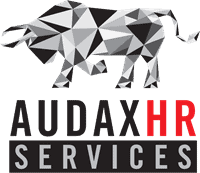Performance reviews may not be the hap-hap-happiest part of the job, but they’re inevitable as the year draws to a close. Experts weighed in with advice for managers who will be giving the reviews and suggestions on how organizations can better prepare managers for that task.
Beware of Proximity Bias
Managers should be conscious of the tendency to favor people with whom they work closely or in person—also known as proximity bias, said Laurie Chamberlin, head of LHH Recruitment Solutions, North America, for the Adecco Group headquartered in Washington, D.C.
“Even with everyone having gone fully remote during the height of COVID and, more recently, with many hybrid workplaces as the new normal, numerous studies have shown the dangers of proximity bias,” she said.
In a survey of 10,000 white-collar workers conducted by Future Forum, a research consortium created by Slack, more than 4 in 10 executives ranked the potential inequities between remote and in-office employees as their No. 1 concern, SHRM Online reported in March.
And a 2021 study in the U.K., Chamberlin said, “found remote workers felt more pressure, worked longer hours but were less than half as likely to get promoted, and only 38 percent received a bonus.
“That said, building stronger relationships between employees and managers—regardless of where they are situated—is key in breaking proximity bias and ensuring work is evaluated equally.”
Use Concrete Measures
“The biggest tip for remaining objective and avoiding proximity bias during performance reviews: Define objective performance measures, leverage performance management software and implement manager training,” said Jennie Yang, vice president of people and culture at 15Five, a performance management company based in San Francisco.
“Proximity bias exists because managers need a regular practice of checking in with all employees, not just the ones they see in person, and they might not be basing their performance assessments on objective measurement tools,” she explained. “It’s normal that a bias forms in favor of people with whom they develop relationships, but that should not create unfair reviews.”
Formulate a Plan
Leaders and managers must be clear about what they need to say, advised Carolyn Stern, author of The Emotionally Strong Leader (Figure 1 Publishing, 2022).
“They should determine the ‘what, why and how someone can improve,’ ” she said. “It is not necessary to wait until an employee’s next performance review to schedule a meeting. If a manager has feedback that will help an employee, share it.”
Look at the Whole Person
“The best organizations look at employees for current performance, potential performance and cultural fit,” Chamberlin said. “While younger workers may not be churning out results yet early in their career, employers should be wary of labeling them quiet quitters.”
There are other ways to measure engagement and potential. Ask yourself the following questions: Is the employee curious and an active learner in the work environment? Does the employee maintain an appropriate workload, ask for guidance of what good performance looks like and strive to reach it?
“Similarly, for those returning to the workforce after a gap, the fast pace of change in today’s world of work may present cultural and digital skills-based barriers that require support and institutional buy-in to mitigate,” Chamberlin said. “Leaders who recognize those who want to do the work if given the proper tools will find a loyal, productive and committed workforce.”
Make Sure You Have a Dialogue
“Every review should include a two-way dialogue about what is positive and areas for improvement,” Chamberlin said. “Even the best employees like to know that their leader sees further potential in them.
“For those where the review is not as positive, be direct and constructive,” she added. “Does the employee agree? What is the best path forward? As organizations address talent shortages, employers are able to provide the support necessary to nurture valuable talent, including potentially reskilling or upskilling them into roles within the firm now or in the future.”
Stern advises managers to be specific and provide examples.
“One of the most fruitless things managers can do is be unclear,” she said. “They should not provide vague feedback such as ‘You could do better’ or ‘Good job.’ ” Without guidance, the employee will wonder how to improve.
Additionally, provide constructive feedback by focusing on action-oriented language, Stern recommended.
“Managers should use language such as ‘Next time, you could try …’ or ‘Taking this approach will … .’ “
Workers crave conversations about career progression, the Adecco Group noted in its Global Workforce of the Future Report released in September, but nearly one-quarter of the 34,000 workers it surveyed across 25 countries are not having those talks.
“Taking an interest in the employee’s progression,” Chamberlin advised, “and sharing an honest assessment of skills needed to get there is the most critical thing an organization can do to retain talent.”
Equip and Train Managers
“Manager training is vital,” Yang said. This is especially true for new managers “so that they learn to communicate more effectively, improve employee performance in real time, coach employees to achieve their objectives and key results, and conduct fair reviews based on actual objective performance data.”
HR should equip managers with tools that facilitate weekly one-on-one digital check-ins for remote workers and establish and track objective measures of performance like goals and key results that they can then reference when writing reviews, she noted.
Many leaders, Chamberlin said, are focusing on data and employee output—as well as physical presence—to evaluate work and potential development.
“Leading and evaluating in this new way requires firm, concerted effort and can be overlooked if a manager hasn’t undergone thorough leadership training that highlights the potential for proximity bias and ways to avoid it.”
This content was originally published here.



